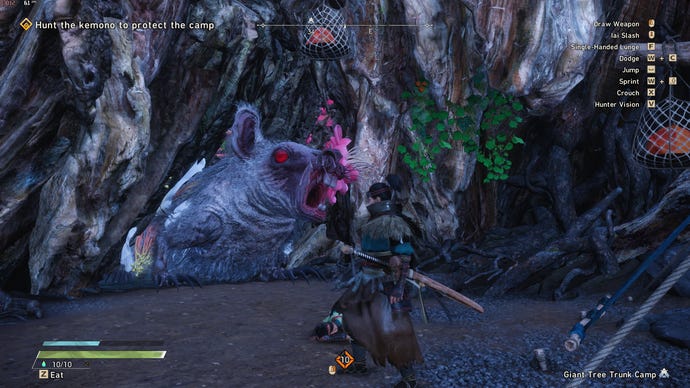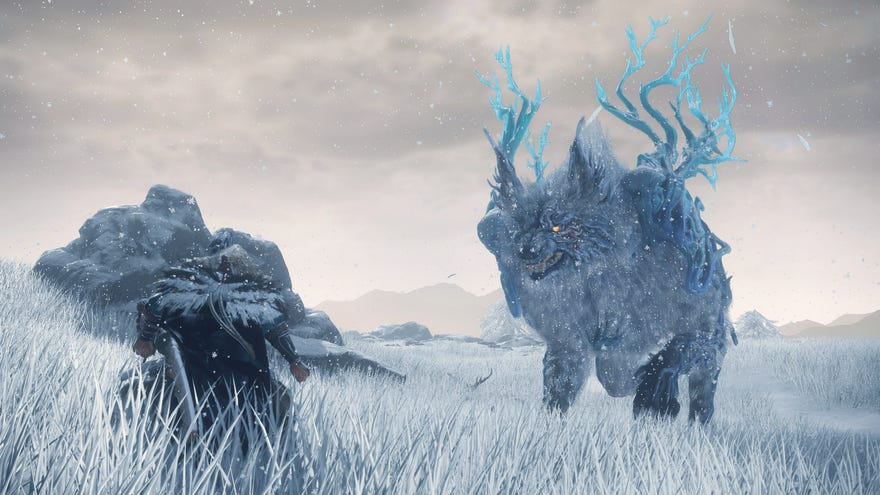Wild Hearts: the best settings to use on PC
Updated with the recent performance patch
Wild Hearts launched last week into a world of problems on PC, from dreadful overall performance to more specific issues with certain graphics cards and a bizarre bug that meant setting audio output to Stereo meant fewer frames per second. The game itself proved enough of a satisfying monster hunter (no relation) to charm Liam, but the technical mess remained.
Developers Omega Force say they’re continuing to work on Wild Heart’s PC performance, including the future addition of DLSS and FSR upscaling, and this week released a patch that claimed to fix several key snags. Did it? To find out, I returned to it with the same RTX 3070 GPU I used for our original best settings guide, and... uh, it’s still bad. Sorry.
After the patch, I couldn’t record any difference between the Stereo and 5.1/7.1 audio output settings, so that’s either been fixed or I continue to dodge it. But Wild Hearts’ biggest problem on PC, its incredible CPU bottlenecking, has only improved by the slightest margins. Previously, my test PC had – using the Lowest quality preset – averaged 73fps at both 1080p and 1440p, a telltale sign that the CPU was blocking the graphics card from reaching its potential on the lower resolution. Post-patch, 1080p produced 80fps, while 1440p produced 78fps.
That shows a small overall performance uplift, but the miniscule 2fps difference between resolutions suggests that CPU bottlenecking continues to haunt Wild Hearts on Windows.
The closest thing to good news here is that, compared to Wild Hearts' launch state, it takes fewer individual graphics option changes to produce FPS gains over the game’s Highest preset. Time, then, for an updated settings guide.

Wilds Hearts: best settings guide
Normally I’d type all these out, but for the benefits of instant-comparison-o-vision, let’s consider how Wild Hearts’ individual settings affect performance when lowered... in table form. Originally, my 'control' result was the 59fps averaged by the RTX 3070 at 1440p; after the patch, that rose slightly to 61fps, so all results in the "After patch" column represent the benchmark result can be compared to that as well as their pre-patch equivalents.
| Setting | Before patch (control: 59fps) | After patch (control: 61fps) |
|---|---|---|
| Upscaling, Disabled to Enabled | 68fps | 73fps |
| Textures, High to Low | 59fps | 63fps |
| Model quality, High to Low | 61fps | 61fps |
| Texture filtering, High to Low | 61fps | 61fps |
| Particle effects, High to Low | 59fps | 62fps |
| Procedural density, High to Low | 60fps | 62fps |
| Shadows, High to Low | 60fps | 63fps |
| Reflections, High to Low | 60fps | 62fps |
| Global illumination, High to Low | 61fps | 66fps |
| Clouds, High to Low | 58fps | 60fps |
| Anti-aliasing, TAA to FXAA | 60fps | 62fps |
| Motion blur, Enabled to Disabled | 59fps | 65fps |
| Ambient occlusion, Enabled to Disabled | 59fps | 62fps |
| Depth of field, Enabled to Disabled | 60fps | 64fps |

We can see that Textures, Shadows, Reflections, Global Illumination, Motion blur, and Depth of field all yield improvements when reduced or switched off. I’d advise leaving Textures on High, though, as setting them to Low makes environments look right ugly, and ultimately this guide is about optimising performance rather than just blunderbussing quality in pursuit of more frames. Similarly, don’t touch the Upscaling option. It ain’t DLSS or FSR, and looks so blurry I’m not even convinced the actual upscaling component is working properly -- as if the game just drops the rendering resolution and leaves it there.
Thus, I deem Wild Hearts’ best settings combination to be the following:
- Shadows: Low
- Reflections: Low
- Global illumination: Low
- Motion Blur: Disabled
- Depth of field (DoF): Disabled
- Everything else: Highest
With these settings, the RTX 3070 averaged 69fps, a 13% improvement on the Highest preset without the poor quality of the Lowest preset. My previous guide, from before the patch, went further by making cuts to Model Quality and Texture filtering as well, and that only produced a 12% gain. If you could say something good about this patch, in other words, it would be that general performance has been smoothed out slightly, and it doesn’t take as many concessions to make up your FPS.
Wilds Hearts still needs an awful lot of work, though. That bottlenecking issue needs a much more effective fix, and I still felt plenty of stuttering as I recorded these updated results. What a shame.


















